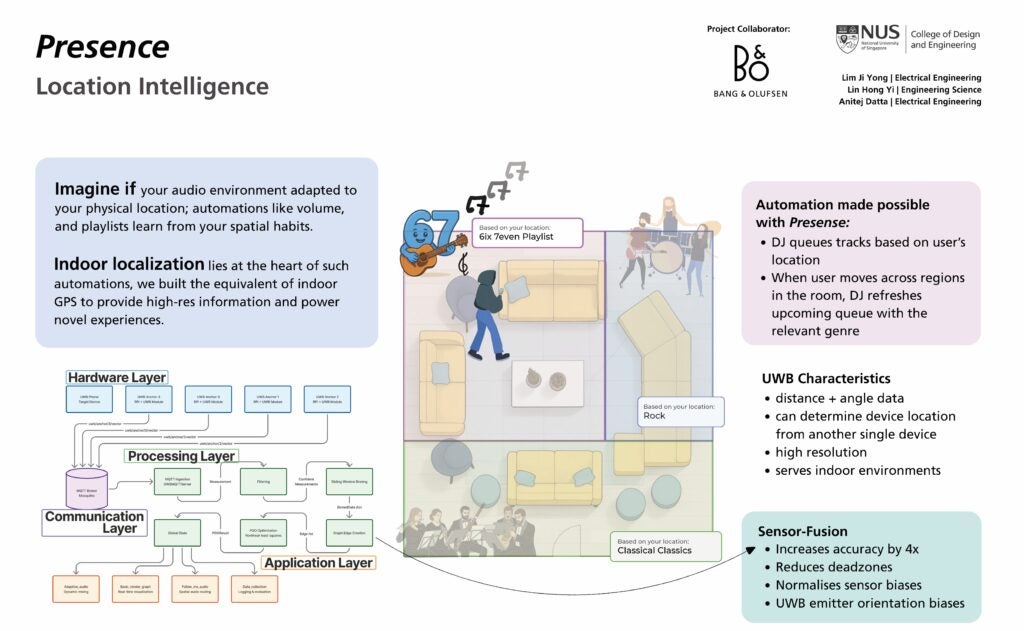Presence: location intelligence
Bang & Olufsen (B&O), a Danish luxury audio company, envisions future sound systems that respond intuitively to a listener’s position — creating seamless, spatially adaptive audio experiences across rooms. Achieving this requires precise, room-scale indoor localisation.
This project develops an Ultra-Wideband (UWB)–based middleware that bridges raw radio-frequency ranging data to a usable, high-resolution spatial grid. The middleware fuses data from multiple distributed anchors to determine a user’s live position. Our design follows a three-layer architecture:
- Edge layer: Multiple NXP Type-2BP UWB modules collect Time-of-Flight and Angle-of-Arrival data from an iPhone acting as a UWB transmitter.
- Communication layer: A distributed MQTT Pub-Sub framework allows each anchor to publish its data over Wi-Fi to a central broker, ensuring scalability and resilience across rooms.
- Processing layer: A Pose Graph Optimisation (PGO) algorithm fuses all incoming measurements into a globally consistent position estimate. Outlier rejection and a sliding-window filter reduce noise and reject erroneous readings in real time.
Across our controlled test rig, the middleware consistently improved position accuracy by ~32% over the worst-anchor baseline, while rejecting roughly 10% of noisy data before fusion. The system not only reduced mean error by 3-4x, but also improved reliability. This demonstrates that even imperfect UWB readings can, through sensor fusion, yield stable, high-fidelity location data suitable for responsive multi-room sound experiences.

Project Team
Students:
- Datta Anitej (Electrical Engineering, Class of 2027)
- Lim Ji Yong (Electrical Engineering, Class of 2027)
- Lin Hong Yi (Engineering Science, Class of 2027)
Supervisors:
- Dr Yen Shih-Cheng (sc.yen@nus.edu.sg)
- Mr Graham Zhu (graham88@nus.edu.sg)

